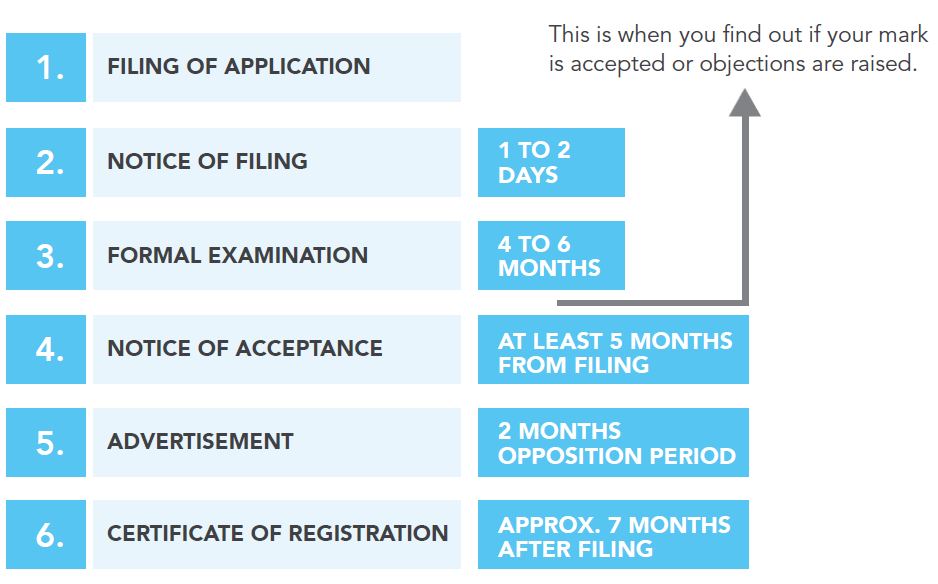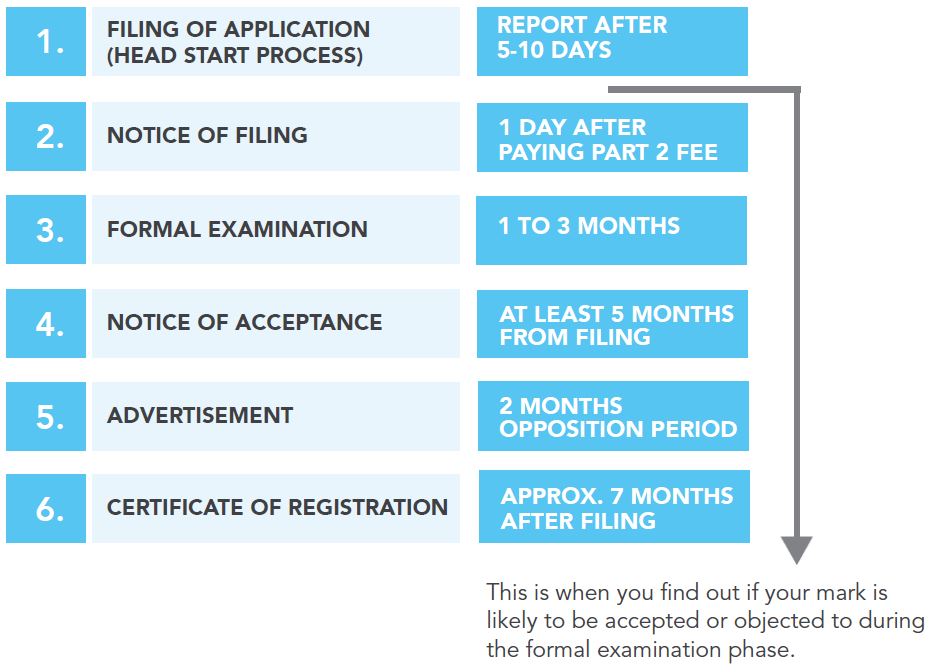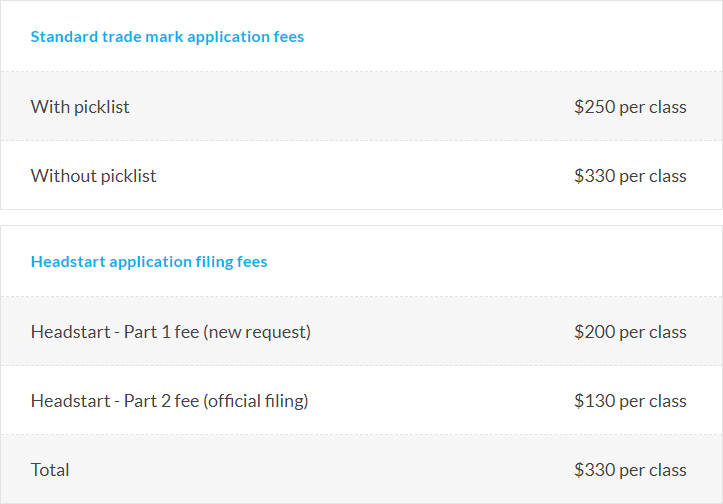29 Jun Your Complete Trademark Australia Guide
 Author: Ian Aldridge, Progressive Legal
Author: Ian Aldridge, Progressive Legal

Welcome to our Trademark Australia guide—a comprehensive resource for business owners, startups, and entrepreneurs seeking to protect their intellectual property, trademark a name or logo, and build a legally secure brand. Whether you’re learning how to register a trademark in Australia, exploring trademark law, or wanting to know how long a trademark lasts, this guide covers everything you need to safeguard your brand in today’s competitive market.
In this guide, we’ll delve into the fundamentals of trademark registration, strategies for safeguarding your brand, and practical tips for maximising the value of your trademarks.
Trademark Issues Covered In This Guide
Click on any of the questions you have below to jump straight to an answer in our trademark guide:
Introduction to Trademarks in Australia
Importance and Benefits of Trademarks
Comparing Trademarks with Other Intellectual Property Rights
- What is the difference between a Trade Mark and a Copyright?
- What is the difference between a Trademark and a Patent?
Trademarks for Small Business
- Do Small Businesses Need to Register a Trademark?
- Do I need to Register a Trade Mark if I’ve been in Business for a while?
How to Register a Trademark in Australia
- Who can Register a Trade Mark in Australia?
- What can be Trade Marked?
- I have a business name? Isn’t that enough?
- What are the Consequences if I don’t Register my Trade Mark?
- When should I Register my Business Name as a Trade Mark?
- Why is Registering my Business Name as a Trade Mark so Important?
- Should I Trade Mark my business name, logo, tag-line or all of them?
- Should I Trade Mark my Domain name?
- Should I Trade Mark my Logo and Tag-line?
- How long will my Trade Mark Last?
- What is the Priority Date of a Trade Mark?
- What’s the difference between a Trade Mark Application and a Trade Mark Registration?
Trademark Registration Processes in Australia
- What’s the Standard Process of getting a Trade Mark in Australia?
- What’s the Head-Start Application Process for getting a Trade Mark in Australia?
- Why should I use the Head-Start Application Process?
- How do I know if my trade mark is available?
- What’s the cost of registering a trade mark in Australia?
International Trademark Protection
- Is my Australian Trade Mark protected overseas?
- How do I apply for my Trade Mark Overseas?
- Time is of the Essence! – International Trade Marks
Trademark Classes and Goods/Services in Australia
- What are the Different Classes of Goods and Services for Trade Marks?
- The Importance of Filing Trade Marks in the Correct Class
Using and Protecting your Registered Trademarks
- How do I use my Trade Mark?
- What Problems could arise when Registering my Trade Mark?
- What do I do if I find someone using my trade mark?
- Can Someone Oppose my Trade Mark Registration?
- Why may my Trade Mark be Opposed?
- Time is of the Essence – Trade Mark Oppositions
Hiring a Lawyer for Trademark Matters
Conclusion and Recommendation
What is a Trade Mark?
A trade mark is a “badge of origin” for your brand.
Trade marks distinguish the goods or services of one business or trader from others.
It is a unique identifier of the source or origin of the product or services associated with it.
It is a valuable asset for businesses, helping them build brand recognition and establish a positive reputation in the marketplace.
Why do I need a Trade Mark?
Trade marks prevents consumers being confused as to who is the ultimate owner of the mark of a particular good or service.
With globalisation, the Internet, and growing awareness about trade marking, businesses are now more determined than ever to safeguard their brands and defend their legal rights.
There is now a greater emphasis on developing a strong intellectual property protection strategy for businesses, which involves ensuring the protection of all available trade marks.
The reason why you register your mark with IP Australia is so that you have much greater protection. Your rights in the mark are then easier to enforce and you have a much stronger legal position.
Most investors or purchasers of a business will insist on the registration of trade marks because they know what the dangers are if they aren’t protected. It’s just good business and it should be a part of your businesses’ IP protection strategy (just like securing all the business names, domain names, social media handles etc).
Do Small Businesses Need to Register a Trademark?
Think about all the bigger brands out there and what you’ve seen used in advertising from one brand to another.
What was once thought only necessary for big businesses is starting to become extremely important for small businesses, all the way from your start-up. Remember, the younger the business, usually the more vulnerable it is.
Who can Register a Trade Mark?
The individual or company that controls the use of the trade mark should be listed as the applicant of the trade mark application.
It is potentially fatal to register a trademark in the name of a business (as a business name is really just a nickname).
The copyright in any artwork included in the trade mark (i.e. a logo) must also be owned by the applicant prior to the trade mark being applied. That is, a Deed of Assignment of Intellectual Property or Deed of Assignment of Trade Mark should be prepared and executed prior to the filing of the trade mark.
It is vital to make sure that the correct legal entity that owns the trade mark is correct at the time of filing and is in existence at that time.
What can I Trade Mark?
Anything that shows your customers who you are as a brand.
It could be your business name, logo, tag-line, slogan, hashtag, pictures, sounds, movements, phrases, products, programs or services you want to deliver – anything you use to differentiate yourself from your competitors.
Trade marks are “badges of origin” of the business. It is what makes the business distinctive from others in the market. It’s what makes you stand out. It could be even your Favicon! Check out own favicon trademarked on IP Australia here!
I have a business name? Isn’t that enough?
Most Australian businesses don’t realise that just because you have a business name – it doesn’t give you the legal right to use it, and use it exclusively!
That might sound quite strange, but we hear it so often – if someone was out there first using it in the market (whether it’s a name, tag line, product name, slogan, logo), technically, they have first legal rights to it.
In Australia, we have a first to use system, not a first to file. Filing first obviously has its advantages and it helps prevent others from coming onto the register and preventing your trade mark from being accepted and registered. Best to do it before someone else does, or does something similar that prevents yours from going through.
Only a registered trade mark with IP Australia will give you the highest possible legal rights to the trade mark.
A business name is essentially a nickname, and distinct from a legal entity.
The legal entity might be for instance Bob Smith t/as Bob the Builder, or Bob Smith Pty Ltd t/as Bob the Builder (if a company). The individual or company owns the business name, and can own many others.
Our ‘Trademark a Business Name’ page has more information on the difference between a business name and a trade mark. Alternatively, check out our video below for a quick rundown.
What are the Consequences if I don’t Register my Trade Mark?
We’ve seen so many cases where a business that starts to trade (sometimes even for a long period of time), then finds out that they need to stop trading with their name because they are infringing someone else’s trade mark.
It’s an extremely serious issue if it happens and is in most circumstances a very expensive exercise.
Unfortunately, in some cases, it can be fatal for a business.
Although there’s no legal requirement to register your trade mark, the consequences of someone coming along and attempting to prevent you from trading is huge, especially for smaller businesses.
As soon as you use your mark (most commonly business name, logo, slogan/ tag-line / slap-line or product names), you have what is called inherent rights which are common law rights. But only a full trade mark registration will provide you with the maximum protection.
At Progressive Legal, we provide businesses with an exceptional Australian Trademark Registration service. Get in touch with us on 1800 820 083 or feel free to make an enquiry below
Do I need to Register a Trade Mark if I’ve been in Business for a while?
If you’ve been in business for many years, you would have accumulated more intellectual property in your brand than you might realise.
Many investors will insist on trade marks being registered before investing money into a business as a risk preventative.
Also, just because you never had issues with someone infringing your brand before, doesn’t mean it can’t happen now or in the future.
Especially nowadays with overseas business trading here and businesses moving inter-state, it is more important than ever.
If you have a successful business, the chances of someone coming along and leveraging off that reputation becomes higher.
What is the difference between a Trade Mark and a Copyright?
A trade mark and a copyright are both forms of intellectual property protection, but they serve different purposes and protect different types of assets.
Trade mark: Protects brands, logos, slogans, and distinctive identifiers of goods or services.
Copyright: Protects original creative works such as literature, art, music, films, and software code.
Purpose: Trademarks prevent consumer confusion and safeguard brand reputation, while copyrights grant exclusive rights to control the use and distribution of creative works.
If you’re looking for more information about copyrights check out our copyright page here or if you need copyright advice make an enquiry below to get in touch with our experienced copyright lawyers.
What is the difference between a Trademark and a Patent?
A trademark and a patent are both types of intellectual property protections, but they serve different purposes and protect different aspects of innovation and branding.
Patent: Protects inventions and grants exclusive rights to the inventor.
Purpose: Protects new inventions, technologies, or improvements thereof.
Registration: Patents in Australia require formal registration with IP Australia.
Scope: Patents give inventors exclusive rights to make, use, and sell their invention, and allow them to prevent others from using, making, or selling the patented invention without permission.
For more information about patents click here or if you require expert patent legal advice from our lawyers feel free to fill out the contact form on this page.
Why is Trade Marking so Important in Current Times?
Risk management
It’s becoming such a hot topic now and is an essential part of business’ IP strategy. It’s so dangerous to a business if it doesn’t register its trade mark.
Potential investment
Any investors or potential purchasers for a business will look very quickly to make sure that the business has registered all its relevant trade marks. If it hasn’t, they will be asking questions as to why not and be very wary or scared off. This shows how much importance they place on it.
Increasing value of IP generally
As businesses continue to invest in technology and innovative methods, the value of intellectual property is increasing. This includes new trade marks, designs, patentable inventions, technical knowledge, automation, unique processes, and valuable trade secrets that need protection.
The Internet
It’s the driving force behind most of the change and for some businesses e.g. AirBnB, Facebook, Uber, Nike, etc – almost their entire balance sheet is IP.
Increased competition
Even smart medium and smaller businesses are wisely investing heavily in IP as they realise this is the new currency of the digital age. It’s what can make a smaller business compete with larger ones and even outgrow them rapidly, if that IP is protected.
Scarcity
Protection is becoming really important now where we’ve not only got a scarcity of names starting to happen, but also more global businesses are choosing to protect their IP in international markets.
Protection of the business’ legal rights
Having registered trademarks in Australia allows you to prevent others from infringing your Intellectual Property rights – i.e. stop someone else from confusing the market as to who is the rightful owner of that mark.
Should I Trade Mark my business name, logo, tag-line or all of them?
You might suspect the answer already…all of them if you can, and separately – to give them the most amount of legal value and protection individually.
You see, IP Australia views each of these as separate pieces of intellectual property and each of them are capable of registration.
You can combine them together in what is called a composite mark – You can combine the business name with the tag line for instance: “Progressive Legal, Forward Thinking Business Law”. You can see our slogan trademarked on IP Australia here.
It depends, however, in most circumstances securing the name is the first port of call given that most of the investment in IP is around your brand “name” as opposed to a logo or a slogan/by-line/tag-line etc.
Should I Trade Mark my Domain name?
Your domain name is the key to your online presence.
It provides your visitors with insight into what products or services you offer at any given moment, but also to access and purchase your products or services.
In order to trade mark your domain name, the general rule is that it must be used as a badge of origin which distinguishes your goods or services from those of other traders.
If your domain name consists of the name of your branded products or services, then you should register a trade mark for your domain name. A good example is www.finder.com.au.
When should I Register my Business Name as a Trade Mark?
We recommend that you get your name trade marked first as soon as you’re set on the name and happy with it. This is because it takes a lot of time to come up with a name.
It’s much safer to get your trade marks in Australia registered, and get them registered now.
It’s not as expensive as you might think.
A small investment now will protect your business down the track.
A stitch in time saves 9 (or 90, 900 or 9000).
Getting the registered trade marks in Australia now ensures that you have the maximum rights to stop someone coming along afterwards and copying your name and confusing the market.
You might think, “what’s the chances of that happening?”, but believe us, it does.
Even competitors have been known to try and frustrate their opposition by registering similar names and releasing products with same or similar names in order to confuse the market and frustrate you.
We’ve seen it happen too many times – and the consequences can be frightening.
Get in touch with on 1800 820 083 and our experienced trademark lawyers will help you register your business name.
Why is Registering my Business Name as a Trade Mark so Important?
Names are becoming more and more scarce and a lot of businesses are starting to take a very active interest in securing their Intellectual Property.
The cost of potentially going through a rebrand is a scary proposition for any business owner.
Not just the cost of having to change all your branding, documents, contracts, new business name registrations, domain names, business cards, stationery, flyers, social media handles – but also the business frustration and interruption!
The smaller a business is, the more it needs protection against larger “animals”.
Should I Trade Mark my Logo and Tag-line?
Logos and tag-lines are valuable trade marks for your brand.
These aren’t necessarily in order of preference in terms of protection.
A business could have a generic name but seek to protect their logo or tag line first because of the relative importance of it or perhaps the amount of time, effort and cost in producing the logo for instance.
It really is a case-by-case basis and some quick advice from a professional is invaluable.
Have a think about the brand Nike for a moment. That brand has so much value in “Just Do It” and the swoosh, that each the name, the logo and the tag line are virtually the same in terms of recognition for the brand. They’re all synonymous with the brand.
For more information about trademarking a logo, visit our page here.
How long will my Trade Mark Last?
Once your trade mark is registered in Australia, it can last forever, provided it is renewed every 10 years.
When renewing your trade mark, you should check that all the details of your trade mark are accurate.
The validity of a trademark registration also depends on the active use of the mark following the priority date.
This requirement ensures that trademark owners continue to use their trade marks to maintain exclusive rights.
Failing to demonstrate sufficient use within the prescribed timeframe may result in challenges to the validity of the registration.
Need help renewing your trademark? Feel free to make an enquiry below.
What is the Priority Date of a Trade Mark?
The term ‘priority date’ refers to the date that the legal claim to a trade mark commences. The importance of the priority date cannot be understated.
The priority date can be the date a business first files their trade mark application with IP Australia, but can also be earlier if the application is based on another trade application.
It marks the starting point from which the legal rights and protection associated with the trademark are established.
Once a trade mark is registered, its registered rights take retrospective effect from the priority date.
The priority date holds paramount importance in determining the priority of ownership and resolving potential conflicts with other trademark holders.
What’s the difference between a Trade Mark Application and a Trade Mark Registration?
Trademark Application
- Initial step to seek legal protection for a trademark.
- Involves submitting an application to IP Australia.
- Includes information about the trademark, its design, description, and associated goods/services.
- Expresses the intent to register the trademark and gain exclusive rights to its use.
- Application undergoes examination for legal requirements and potential conflicts.
- Applicant may need to address objections or make amendments if required.
Trademark Registration
- Successful outcome of a trademark application process.
- Issuance of a registration certificate by the trademark office.
- Confirms official registration and grants rights and protections.
- Owner obtains exclusive right to use the trademark for specified goods/services.
- Provides legal protection against unauthorised use or infringement.
- Allows the owner to enforce rights through legal means, such as legal proceedings.
Is my Australian Trade Mark protected overseas?
We get this question quite a lot. That, and, “can I register a global trade mark?”
Unfortunately, there’s no such thing as a global trade mark and if you want the highest protection, you have to register in the jurisdiction in which you wish to obtain that protection. i.e. if you want to be protected in the USA, you have to register your trade mark in the USA.
See more here if you want to read about international trade mark applications.
How do I apply for my Trade Mark Overseas?
Now, there’s two ways of doing that – we can either apply for the trade mark in that country as you would starting from scratch, or, we register your trade mark here in Australia first and use the application as a base to file further trade marks in other countries.
The big thing to remember is that if you want protection overseas, you should consider obtaining that protection as soon as possible from a legal perspective (as it really is a first come, first serve – first to register, first with the rights – usually). There are exceptions of course.
For example, if you know you’re going to be expanding into a certain market overseas, you should be looking to register the trade mark that as soon as possible – or at the very least having a strategy in place as to when and what to trade mark.
Also, just because a business has a trade mark in the USA, doesn’t mean they have any protection here necessarily. They will need to be trading here or register a trade mark here in Australia to obtain that protection. Same goes for Australian businesses in other countries.
Time is of the Essence! – International Trade Marks
If you’re already trading in other countries, you should apply to register ASAP as time is of the essence!
Australian businesses usually file applications for trade marks in Australia first, before filing in any overseas countries and it’s possible to register through WIPO (World Intellectual Property Organisation) and apply to register in multiple countries in one go instead of having to do them all separately.
It’s also important to note that if you file an application in Australia first and you intend to, or do, sell your product or offer your service in other countries, you should file an international application in those countries within 6 months of filing your Australian application.
This will give you the benefit of claiming your Australian filing date as the overseas filing date, giving you an earlier protection date.
What are the Different Classes of Goods and Services for Trade Marks?
IP Australia clumps together similar goods and services in 45 different classes (34 classes of goods and 11 classes of services). Find out more about these classes here.
This is so that, for instance, an accounting firm can co-exist on the IP register and not offend a big food store just by having the same or similar name. e.g. McDonalds Accountants and McDonalds Fast Food Restaurants. Or Dove chocolate and Dove soap.
It means that many businesses can co-exist and not have a monopoly over a business name. For instance, when they operate in a completely different market, it’s not going to confuse the market by having the same or similar name.
There are a lot of classes with thousands of activities (you can just imagine how many businesses are doing what types of activities).
The downside is that you have to pay per class, per application. However, in most instances we find businesses will only cover 1 or 2 classes of business, but in some circumstances 3 or 4.
The Importance of Filing Trade Marks in the Correct Class
It’s critical to get the classes and activities right the first time around because you can’t expand on an application after it is filed – you can only narrow the scope!
You want to make sure you get all the correct classes and activities withing those classes as core activities to make sure you have adequate protection. That is what it is all about. You don’t want holes in your application which may allow others to register underneath you and confuse the market. We have seen many instances of trade marks being accepted by IP Australia that have gone through as a result of businesses not having full and proper trade marks filed.
If you don’t get all your core activities the first time around, then you will need to file a new application with IP Australia to get them covered, so best to get the right advice first.
What’s the Standard Process of getting a Trade Mark in Australia?
IP Australia is the governing body of all registered intellectual property in Australia. It is the central repository for Trade Marks, Registered Designs, Patents, and other IP.
The Australian trade mark registration process is conducted on-line through IP Australia.
After filing a standard trade mark application, you will receive a notice of filing within a day or two and be allocated a filing date. As soon as you obtain the filing date of the application, you’ll obtain protection i.e. you have more rights as of that date.
From there, it usually takes 4-6 months for the mark to be formally examined by a trade mark examiner, at which point they’ll indicate whether IP Australia has any objection to the mark, or if they think anyone else on the register would have an objection. There are a number of other objections they may also raise.
However, if all clear – then the application proceeds to acceptance and is advertised in the official Trade Marks Journal. It’s open for a period of 2 months, which allows others the opportunity to oppose to the mark if they have a valid reason.
If there is a problem with the mark at the examination stage, an examination report will be provided and you’ll be given the opportunity to respond to the objections.
The whole process takes at least 7/8 months from filing all the way up to final registration, but it’s well worth the wait to have your IP secured and, in any event, you receive priority rights from the filing date.

What’s the Head-Start Application Process for getting a Trade Mark in Australia?
The problem with the standard process is that it can take 4-6 months before the trade mark is even looked at by IP Australia and for most businesses, that’s too long to find out whether they can start using a name/logo/tag-line/product name etc in the market.
So, IP Australia invented this great system of being able to find out within 5-10 working days what ordinarily happens in 4-6 months and speeds up the examination of the mark.
With the head-start process, you obtain a report within 5-10 business days (as opposed to months) which picks up whether there will be an issue with the proposed trade mark. This allows you to consider any likely objections by IP Australia or other Trade Mark owners.
Why should I use the Head-Start Application Process?
This early assessment allows you to cure any potential defects prior to lodging the formal application (afterwards it can be difficult to amend in any significant way).
It’s completely confidential and no one will see your proposed Trade Mark until you’re ready to file.
You can also discuss any issues with the assessing examiner after you receive the report. If it’s all clear, then you can pay the second part of the fee and get underway with the usual process.
If you think there might be issues with the mark, then you can amend the application to cure the objections (e.g. if the mark is too descriptive or generic, likely to be needed by other traders).
Instead of wasting further time and money, you can amend the application and start the head-start process again.
This quick turnaround gives the modern fast-paced entrepreneur more comfort in using their business name / logo / slogan in the marketplace and not having to wait months before the standard application is assessed.
We’ve had loads of clients make invaluable use of the head-start application process which has picked up potential objections by IP Australia, allowing us to amend applications before their application is officially filed. Our clients have peace of mind that they’ll be able to use their trade marks and prevent others from using the same or similar mark and confusing the market.
We’ve also saved a lot of clients from going ahead with a Trade Mark and having to go through a costly rebrand down the track and potentially infringing other intellectual property.
We’ll usually make use of the head-start process, unless there are reasons otherwise to obtain a filing date as a matter of urgency (potential infringing business), or if clients have been trading for a very long time and have significant and extensive evidence of use.
In most circumstances, the extra fee of $80 per class to find out in 5-10 days instead of months, is a no-brainer.

Check out our TM Headstart page to find more about why it’s a no-brainer when applying for a trade mark. Our experienced trademark lawyers can guide you through the process while providing invaluable advice.
How do I know if my trade mark is available?
We use IP Australia’s Australian Trade Mark Online Search System (ATMOSS).
It is a great tool to find out whether there are any other businesses that have same or similar trade marks in order to determine the chances of success in obtaining a potential trade mark.
We can do a simple search for you to see whether other traders have registered on the trademark register, and in what classes of business and activities underneath those classes.
There’s also a way to do more advanced searches to see if anyone has registered in similar or related classes and what they have registered.
Because it’s all publicly available information, it’s free to find out but you have to know where to look and after doing tens of thousands of these searches, we know where to look and can advise you quickly.
We’re happy to provide you with a complimentary quick search to check the availability and provide you with some advice on what to register and the prospects of success.
What’s the cost of registering a trade mark in Australia?
Government fees

Our professional fees
We charge a flat fee $950 + GST + gov’t fees to file a trade mark, then $450 + GST admin fee for handling all the notices through filing, examination, acceptance, advertisement up to final registration.
Be very wary of those law firms or IP attorneys that charge per class of business.
We understand why they would do this as it takes a bit longer for each application when extra classes are added, and activities need to be identified.
However, in our experience, it doesn’t truly represent the real time involved.
Additionally, it provides a disincentive for clients to get the protection that they need. i.e. if it costs more for extra classes on top of the government fees, then clients are likely not to get the full protection they need.
Get in touch with our trademark team for further guidance on trademark costs or visit our page here for more information.
How do I use my Trade Mark?
Once we receive a filing date for your trade mark, you start to accumulate further legal rights – straight after the filing date.
Shield or sword
You can use a registered trade mark as a shield or a sword.
A shield: to prevent others from registering the same or similar mark underneath you on the IP Australia register. i.e. first come, first serve.
A sword: to stop others from infringing your IP and misleading the market, confusing potential customers or even taking profit away from your business.
We’ve seen it happen a lot: derivative product names, logos etc. Especially now that businesses are starting to become very savvy about their rights and becoming very protective of their brands.
Using the symbols™, ® and Copyright ©
You might notice a difference with how big brands use different symbols at the end of their trade marks. E.g. BRAND NAME ™ or COMPANY ®.
You can use the ™ symbol when you want to identify to the market that this is your brand, this is your logo, this is your tag-line to make sure that everyone knows that you are serious about it and are willing to protect it.
You can only use the ® symbol when you have registered rights in the trade mark, i.e. you have received the Certificate of Registration.
You may use the ™ symbol all the way up to final registration of your mark and once it’s registered, change the symbol to ®.
You can use the Copyright symbol © on your literary work, website, publications etc without registering the work as you have inherent copyright in your words.
Best is to identify e.g. “Copyright © – Progressive Legal Pty Ltd (ACN 607 068 708) Trading as Progressive Legal. All rights reserved (2019).”
What Problems could arise when Registering my Trade Mark?
A trade mark application may be rejected for several reasons. Some of the most common reasons include that the trade mark:
- contains or consists of a sign, or resembles a sign, that is prohibited from being used as a trade mark;
- cannot be represented graphically;
- does not distinguish the applicant’s goods or services from those of another person;
- contains (or consists of) scandalous matter, or its use would be contrary to law;
- would be likely to deceive or cause confusion; or
- is substantially identical (or deceptively similar to) another registered trade mark or trade mark that is pending registration.
What do I do if I find someone using my trade mark?
Step 1: Preserve the evidence
It’s vital to preserve the evidence because posts can be taken down and then difficult to obtain if the evidence isn’t preserved.
Whether this is taking screen shots or printing a hard copy of the online offending material, it’s important to keep a permanent record of potential intellectual property rights breaches.
This can be used to explain to your lawyers what the offending conduct involved, and as evidence to support a claim later down the line if necessary.
Make sure you include evidence on all the social media if you can, showing how many people have for instance viewed, commented, reacted, shared etc! This will show the amount of damage.
Step 2: Step back – do not engage
Be extremely careful about what you say.
How you respond to finding someone infringing upon your intellectual property rights is very important.
Be careful not to take the bait, react emotionally, engage with trolls or put your foot in it.
If you get into an online screaming match, it’s not going to assist you.
Step 3: Get advice
Speak with a lawyer ASAP.
Following the above, it’s vitally important to speak with a lawyer before taking any steps to respond.
The longer you wait, usually the worse it gets, and the more damage done – time is of the essence!
Make sure you are getting the right advice from the right person that has experience in this area of Law.
We find not many lawyers really understand the online environment, so really make sure they’ve got some experience in dealing with this type of situation.
Call/email us as soon as possible so we can go through it together and work out an immediate strategy.
Step 4: Prevention is the best cure
Get adequate protection: this is your wake-up call
To prevent or avoid situations like these, or to put yourself in the strongest position should an infringement dispute arise, ensure that your intellectual property rights are appropriately protected.
With intellectual property, possession is sometimes said to be nine-tenths of the law.
That is, whoever has registered their trade mark or created their copyrighted material first will have the best claim over its ownership.
Because of this, it’s very important to act promptly and get your intellectual property protected as quickly as possible.
As a business owner, you need to make sure this process is carried effectively to ensure your full protection. Consult with us to ensure a smooth process.
Can Someone Oppose my Trade Mark Registration?
As a trade mark owner, you may receive a trade mark opposition against your trade mark application, or you may need to file a trade mark opposition in order to preserve your rights.
An opposition against the registration of another trade mark may be filed if someone believes a pending trade mark application will hurt or compromise the integrity of their brand.
Why may my Trade Mark be Opposed?
An opposition may be made on certain grounds, including that the trade mark:
- Is not capable of distinguishing the applicant’s goods and services from those of other traders;
- is scandalous or contrary to law;
- is likely to cause confusion;
- will not be used by the applicant;
- is too similar to another trade mark that as acquired reputation; and
- has been registered in bad faith.
Time is of the Essence – Trade Mark Oppositions
After a trade mark is accepted for registration, interested parties only have two months to lodge an opposition from the date of that acceptance.
If this deadline is not followed, your opposition may not be considered valid.
You must then go through the tedious process of opposing through the Federal Court. This is much more expensive, time consuming and follows stricter rules regarding evidence requirements and procedures.
In order to avoid this, remember that time is of the essence.
What’s the Benefit of getting a Lawyer to do my Trade Mark?
Like anything in life, if you don’t do something every day, there’s a greater chance you’re likely to get it wrong than having someone that does.
Also, it’s probably not your highest and best use of time. E.g. I get my accountant to do our reconciliation and tax returns because I’m likely to get them wrong or not know all the relevant, up-to-date information.
The difficulty with trade marks is that you’re not allowed to substantially amend the trade mark (unless you narrow the scope) after you’ve filed it, so if you muck it up, you basically have to do the whole thing again and start from scratch and pay all the fees again – and leaving the business exposed in the meantime!
It’s not that expensive for the protection it provides, and at least you know that the mark you register is going to give you the protection you need, or as much as you can afford.
A registered trade mark will give you protection for 10 years so is great value for money and peace of mind that you’re protected.
Do you need Trade Marks registered for your business?
We advise Australian businesses everyday about their trademarks both here and internationally.
We’re practical when it comes to financial matters and can work with you to obtain the protection you need with payments in stages if you need extra time to assist your cash flow.
Feel free to get in touch – we’re here to help.
Why Progressive Legal?
After helping over 3,500 SMEs over the past 9 years in the areas of Intellectual Property Law, Commercial Law, Dispute Resolution, Corporate Law and Workplace, we’re passionate about what we do and protecting our clients.
We’re relationship driven, not transactional (unlike the traditional law firm).
By striving to be affordable, practical and personable – we aim to be your long-term trusted business legal advisor.
Contact Us
Need Legal Help
If you are seeking expert trademark legal advice, turn to Progressive Legal.
Find out how we can help or please complete the form above.
- 01 February, 2024
- 18 January, 2024

Ian Aldridge is the Founder and Principal Lawyer Director at Progressive Legal. He has over 15 years experience in advising businesses in Australia and the UK. After practising in commercial litigation for 12 years in major Australian and International Law Firms, he decided to set up a NewLaw law firm in Australia and assist growing Australian businesses. Since then, he has advised over 2,500 small businesses over the past 6 years alone in relation to Intellectual Property Law, Commercial, Dispute Resolution, Workplace and Privacy Law. He has strived to build a law firm that takes a different approach to providing legal services. A truly client-focused law firm, Ian has built Progressive Legal that strives to deliver on predictable costs, excellent communication and care for his clients. As a legal pioneer, Ian has truly changed the way legal services are being provided in Australia, by building Legal Shield™, a legal subscription to obtain tailored legal documents and advice in a front-loaded retainer package, a world-first. He has a double degree in Law (Hons) and Economics (with a marketing major). He was admitted to the Supreme Court of NSW in 2005.






